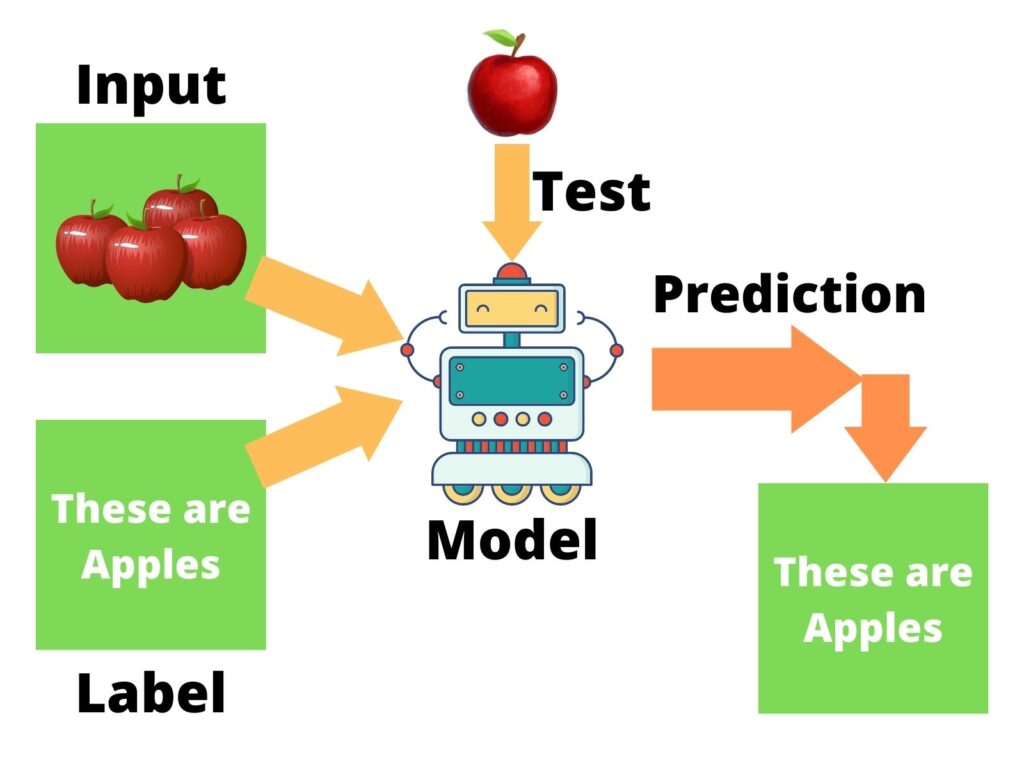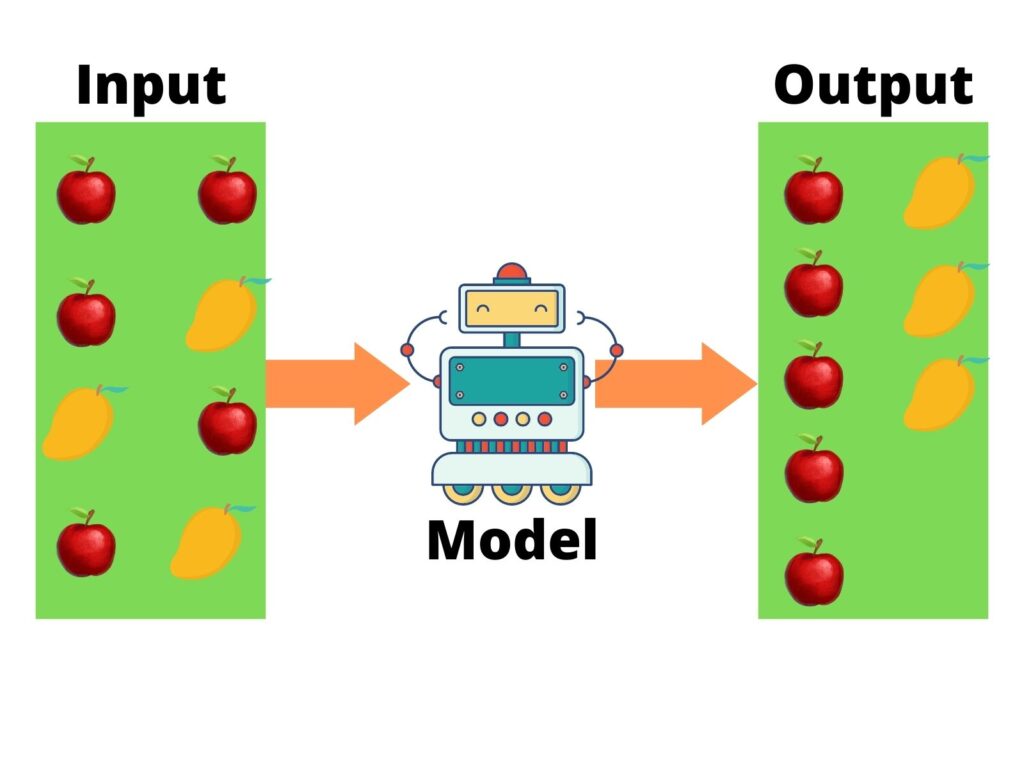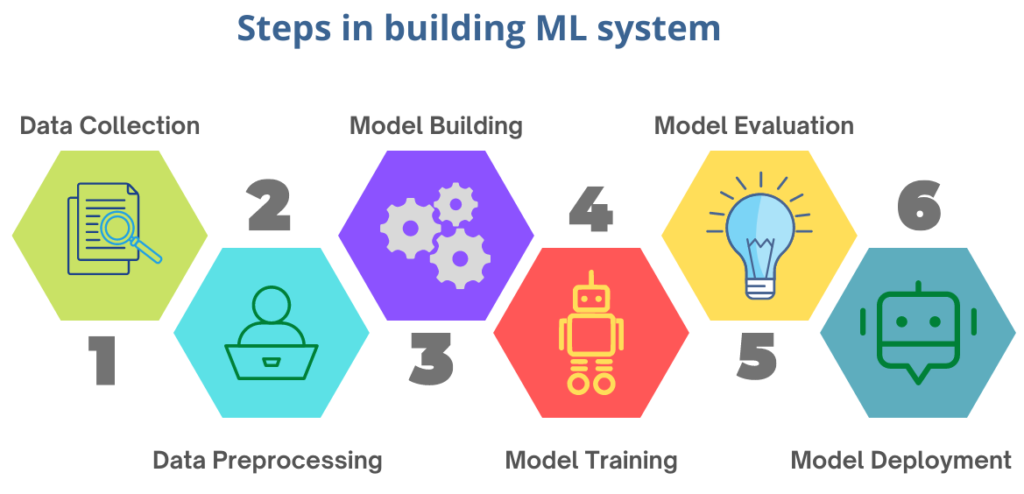
What is Machine Learning?
In this article, we will see learn about ML Systems or Machine Learning Systems. Before learning about ML Systems, let us first understand the term Machine Learning. It is a field of Artificial Intelligence, where humans train the model to learn, analyze and make decisions. Machine Learning is an important part of Data Science and the ML model improves its efficiency over time by learning from the experience. You can learn more about Machine Learning here.
Importance of ML Systems
ML Systems has an important role in giving enterprises a view of trends in customer behavior and business operational patterns. It also supports the development of new products. Many of today’s market leaders such as Facebook, Google, Netflix, and Amazon, make machine learning a central part of their operations. Machine learning has several practical applications that drive the kind of real business results such as time and money savings. In particular, there is a tremendous impact occurring within customer care and product recommendations, whereby machine learning is allowing people to get things done more quickly and efficiently.
Types of ML Systems

There are various Machine Learning algorithms available for different purposes. Some algorithms are suited for dealing with text, some for images, and much more. Choose an appropriate algorithm to build your model after analyzing the dataset and aim to build the model. There are four common categories of ML algorithms, which are discussed below.
Supervised Learning in ML System

Supervised Learning deals with training the model with labeled data. The outcome is known, so the model is continuously refined for accuracy. To understand clearly, we will have the data with predefined output to train the model in the case of Supervised Learning.
Supervised Learning deals with training the model with labeled data. The outcome is known, so the model is continuously refined for accuracy. Some common algorithms in Supervised Learning are Linear regression, Logistic regression, Polynomial regression, Random forest, Decision tree, K-nearest neighbors, and Naive Bayes. A real-time example for Supervised Learning is a bunch of photos with information about what is on them and then you train a model to recognize new photos.
Unsupervised Learning in ML System

If the label data is not available and the outcome is unknown it falls under the category of Unsupervised Learning. This algorithms clusters and groups the data into categories. Some of the algorithms used in Unsupervised Learning are Principal component analysis, K-means clustering, Apriori Algorithm, Partial least squares, Fizzy means, Hidden Markov models, and Hierarchical clustering. A real-time example of Unsupervised Learning is Customer Segmentation on an Online Shopping site.
Semisupervised Learning in ML System

Credits- Medium
Semisupervised learning algorithms can deal with partially labeled training data, usually a lot of unlabeled data and a little bit of labeled data. In the absence of labels in the majority of the observations but present in a few, semi-supervised algorithms are the best candidates for model building.
A common example of an application of semi-supervised learning is a text document classifier. This is the type of situation where semi-supervised learning is ideal because it would be nearly impossible to find a large number of labeled text documents.
Reinforcement Learning in ML System

The reinforcement learning algorithm learns and makes decisions based on the trial and error method. In reinforcement learning, and artificial intelligence model handles a game-like situation, which has a reward system to come up with a solution to the problem. The ultimate goal of the reinforcement model is to maximize the total reward starting from totally random trials and finishing with better results.
The common algorithms of the Reinforcement Learning algorithm are Markov’s decision process, Q-Learning, Temporal Difference (TD), and Deep Adversarial Networks. Reinforcement Learning solves a specific type of problem where decision-making is sequential, and the goal is to build complex models, such as AI-based games.
Steps to design an ML System
There are some steps that need to be followed to design the ML system. The steps are discussed in the following section.

Data Collection
The collection of data is the foundation of the Machine Learning process. The better the collection of data, the better will be the model. So it is very important to concentrate on the dataset before starting to build the model. If you want to build a model with a sample dataset, there are a lot of datasets already available at Kaggle. It is also common to use the web scraping technique to automatically collect information from various sources such as APIs.
Data Preprocessing
Exploratory Data Analysis is done in order to gain an understanding of the dataset. Some of the common approaches for EDA include Data visualization (Scatter plot, heat map, box plot, etc.) and Descriptive statistics (Mean, Median, Standard deviation, etc.)
Data preprocessing is a technique to convert the data collected into a clean dataset. Once we have analyzed data with suitable features, the next step is to preprocess the data for further steps. The quality of data will have a huge impact on the quality of the model. Then, separate the data into two groups, one for training and the other for model evaluation which can be divided depending on the case and the volume of data we have.
Model Building
After segregating the data, our next work is to find a good algorithm suited for our model. This is one of the most important steps in machine learning. There are various models to be used depending on the data you are going to process such as images, sound, text, and numerical values. Our job is to find an appropriate algorithm from the variety of options over there.
Try this article for Model Building in Machine Learning and all steps in ML Building.
Model Training
The main process of building our model starts with the training phase. Here we use the split part of the data set allocated for training to make our model learn. You should spend a quality amount of time during the training phase. The more you tune and prepare the model during training, the better will be the results. This phase requires a lot of patience and experimentation. If you succeed in training your model well, then you can expect good results from your model.
Model Evaluation
After training the model with trained data, the model has to be tested. The purpose of testing is to evaluate how the model will work in real-world scenarios. We can determine the accuracy of the model during this phase. The evaluation phase is very important and we can check whether the model achieves the goal we planned. If the model does not perform well up to mark during the testing phase then the previous steps have to be re-iterated until we attain the required accuracy.
Model Deployment
Model Deployment is the stage in which we integrate a machine learning model into an existing production environment or new application to make practical business decisions based on data. It is one of the last stages in the machine learning life cycle.
Applications of ML System
Machine learning systems have wide applications in many fields. Some of the widely used applications are Email spam filtering, Web search results, pattern and image recognition, Video recommendation, and so on. Recommendation engines are a common use case for machine learning. Other popular uses include fraud detection, malware threat detection, business process automation (BPA), and Predictive maintenance. The applications of Machine learning systems are also widespread in the fields of health care, banking, e-commerce, and so on. Most social media platforms and content-delivering networks use Machine Learning algorithms to provide a more personalized and enjoyable experience.
Conclusion
It is no doubt that Machine Learning becoming a more widely accepted and adapted technology in many fields. In this article, we have learned about ML systems and their types. We have also covered some important steps to building a machine learning system in this article.
Thank you for visiting our website.
Also Read:
- Flower classification using CNN
- Music Recommendation System in Machine Learning
- Top 15 Machine Learning Projects in Python with source code
- Gender Recognition by Voice using Python
- Top 15 Python Libraries For Data Science in 2022
- Top 15 Python Libraries For Machine Learning in 2022
- Setup and Run Machine Learning in Visual Studio Code
- Diabetes prediction using Machine Learning
- 15 Deep Learning Projects for Final year
- Machine Learning Scenario-Based Questions
- Customer Behaviour Analysis – Machine Learning and Python
- NxNxN Matrix in Python 3
- 3 V’s of Big data
- Naive Bayes in Machine Learning
- Automate Data Mining With Python
- Support Vector Machine(SVM) in Machine Learning
- Convert ipynb to Python
- Data Science Projects for Final Year
- Multiclass Classification in Machine Learning
- Movie Recommendation System: with Streamlit and Python-ML
- Getting Started with Seaborn: Install, Import, and Usage
- List of Machine Learning Algorithms
- Recommendation engine in Machine Learning
- Machine Learning Projects for Final Year
- ML Systems
- Python Derivative Calculator
- Mathematics for Machine Learning
- Data Science Homework Help – Get The Assistance You Need
- How to Ace Your Machine Learning Assignment – A Guide for Beginners
- Top 10 Resources to Find Machine Learning Datasets in 2022



